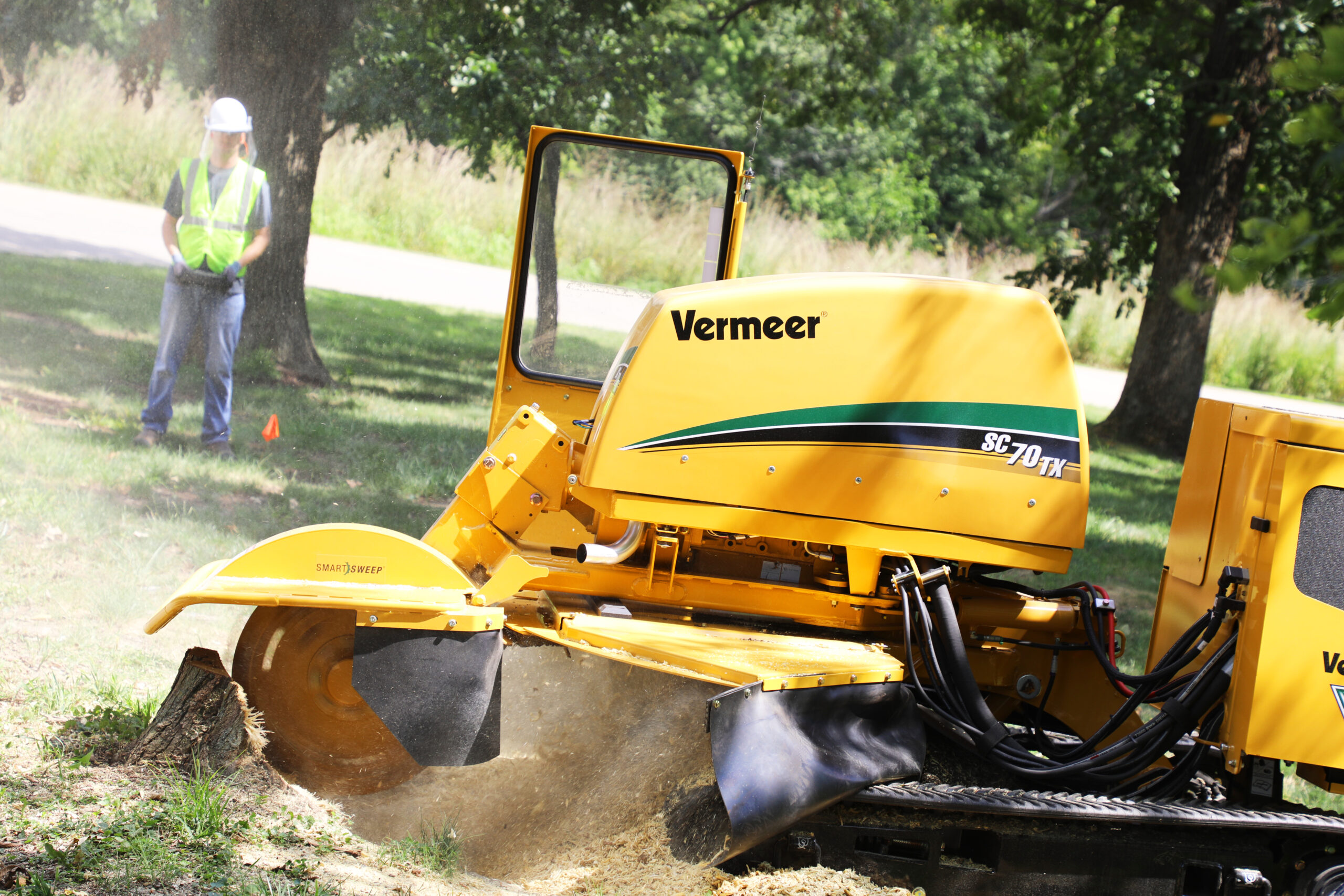In the early 1950s, Gary Vermeer was facing a formidable foe: tree stumps. Millions of them were entrenched in agricultural fields across the corn belt. Gary was grinding his teeth in search of a better way to remove them. Anything but digging them out — a highly labour-intensive process.
In 1957, a Vermeer test crew pitted a novel machine against that common adversary. The crew quickly discovered the best way to grind a tree stump is with a side-to-side cutting motion, sweeping across back and forth.
It was an innovation in tree care equipment — with the approach still driving modern stump grinder technology. And the desire to find solutions still drives product development at Vermeer today.
“Our testing methods are designed around solving a problem,” said Randy Runquist, manager of cutting edge research and development at Vermeer Corporation. “They are designed for a particular product.”
Once a new product is introduced, the enhancements never stop.
“Researching, refining and improving upon our high-quality products is part of the core culture at Vermeer. We are constantly looking for ways to improve every machine component to enhance our customers’ experience,” continued Runquist.
Continuous improvement drives stump grinder advancements
This focus on finding a better solution has led to continual advancements in the Vermeer stump grinder product line — right down to the grinder tips. Models ranging from 25 hp to 74 hp (18.6 kW to 55.2 kW) minimises the labour-intensive work of removing even the most challenging tree stumps.
An example of this continual improvement is the introduction of the Vermeer cutting system (VCS), standard on most new Vermeer stump grinder models. One of the main challenges the research and development team wanted to solve was the tooth and bolt wear. This was an issue with many of the stump cutting systems available.
“Torquing cutter teeth daily is pretty common for most stump grinder users. Bolts that aren’t torqued properly tend to rotate in the pocket, causing premature wear and impacting the performance of the cutter wheel,” said Josh Vrieze, Vermeer senior product manager for Tree Care, Rental, Landscape. “The tooth design on the VCS has a mounting and retention structure that helps keep teeth from shifting while absorbing the shearing force, instead of the bolt securing the tooth to the cutter wheel while operating. This design makes it possible to secure each set of teeth with a single long bolt and reduces the need for retorquing.”
The VCS design is another innovation for the tree care equipment industry. It features a single bolt for all VCS teeth and only two tooth part numbers. Each tooth bolt has ease of access with either a torque wrench or impact wrench. No special tools or disassembly are needed for access to these bolts.
The VCS features two cutting edges, providing the operator maximised cutting performance. The design of the cutting system helps protect the bolt from the sheer force of the cutting action. The new V-profile of the carbide optimises cutting productivity and the industrial carbide material gains productivity at the stump. The VCS retains the two-sided cutter design, but rather than rotate in the pocket, the tooth is flipped to the other side of the wheel to access the other cutting edge.
Want to learn more about Vermeer’s stump grinder range? Contact your local Vermeer Australia tree care expert on 1300 VERMEER or visit vermeeraustralia.com.au.

 MyDealer:
MyDealer:


